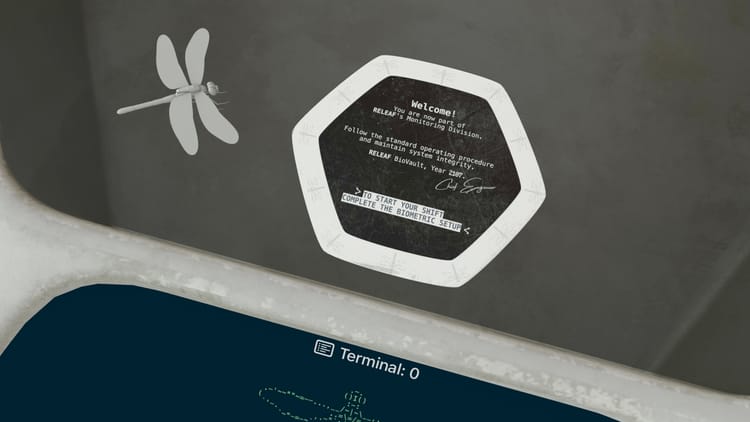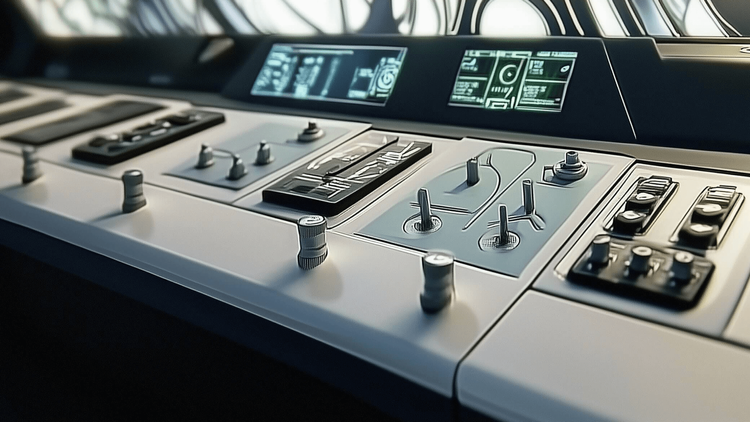Our Approach to Immersive Storytelling Through Design Fiction
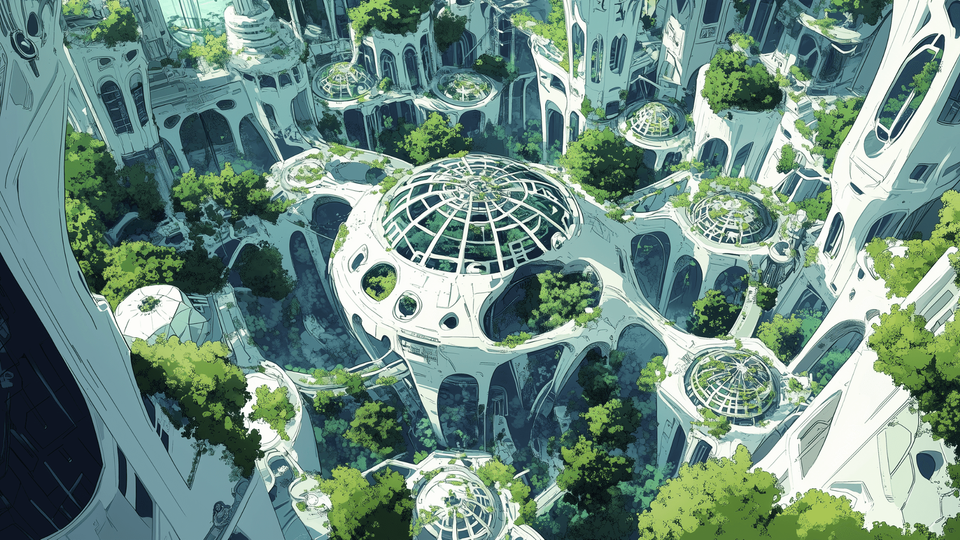
In my previous article, I shared the motivation and inspiration behind The Green Spurt – an immersive escape room-style experience for Apple Vision Pro.
This is the start of a behind-the-scenes series, where I'll share insights into our approach of building an original story, the tools we use to transform ideas into playable game assets, and the lessons we've learned along the way.
Story Building
“Interactive experiences are a new medium that bring together the storytelling possibilities of linear entertainment like film and television, the interactivity of video games, and the immersion and presence of live theater.” – Design interactive experiences for visionOS
From the very beginning, we knew we wanted to build an exciting story that could live beyond this game. Apple Vision Pro provides us with a platform to deliver it in one of the most immersive ways I have experienced in my lifetime.
Finding a theme for our story
In our first session, we put together a list of game and TV stories that we find inspiring and appealing from an aesthetics point of view, to help us shape the direction: Horizon Zero Dawn, Stray, The Last of Us, Fallout, Silo, and more.
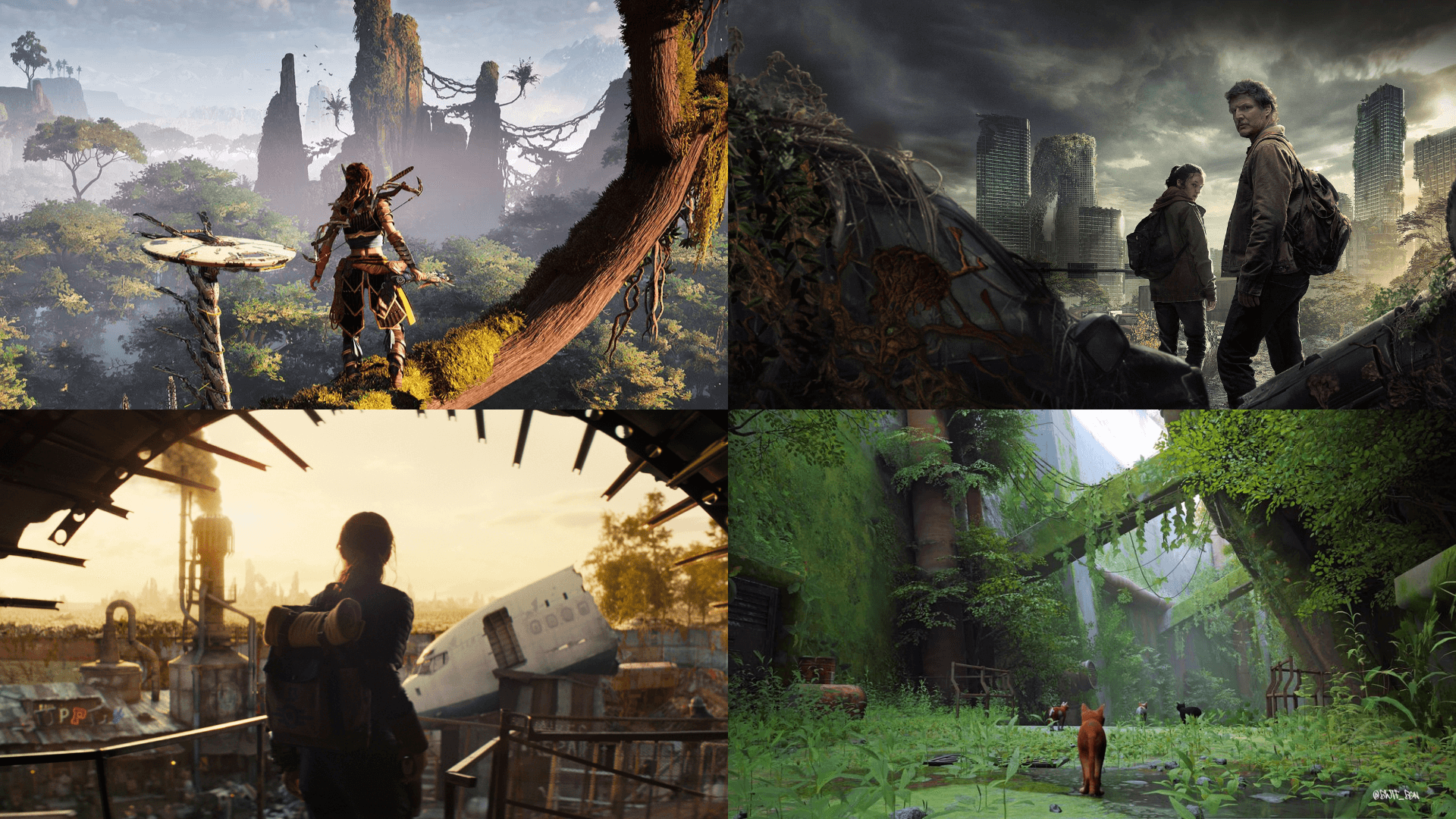
Note to self: We need a dramatic 'hero-seen-from-behind' poster for the game.
The theme outlines were surfacing: A Future Mundane, pre/post-apocalyptic world, where nature plays a significant role in both the story and setting.
“Future Mundane” is a term coined to describe a Design Fiction approach that focuses on the normal, ordinary, everyday aspects of future scenarios. – Near Future Laboratory
We wanted to avoid framing the story as either a utopian dream or dystopian warning. Instead, the message we want to send in the end is a positive one: that humanity is capable of adaptation, no matter what the future holds. A story of resilience and innovation.
Designing our first artifact
Cristian introduced me to the practice of Design Fiction, developed by Near Future Laboratory, as a tool for shaping our story through the creation of fictional objects.
Design fiction is the practice of creating tangible and evocative prototypes from possible near futures to help discover and represent the consequences of decision making. – Near Future Laboratory
As I was learning more about it, I discovered that I already experienced first-hand the works of design fiction at the Museum of The Future in Dubai, where I had the pleasure of being a contributor to one of the projects under the technical direction of Sundar Raman (former Director of Technology at Museum of the Future).
It was fascinating to learn how all the museum's artifacts came to life. An Archeology for the Future in Space article, written by Fabien Girardin, provides an in-depth look into this topic, if you are interested to learn more.
Using The Work Kit of Design Fiction, we held a session to brainstorm our first game artifact. To get started, the kit instructs you to pick one card from each of the four decks—Attribute, Object, Action, and Archetype. With a random selection, here’s what we ended up with:
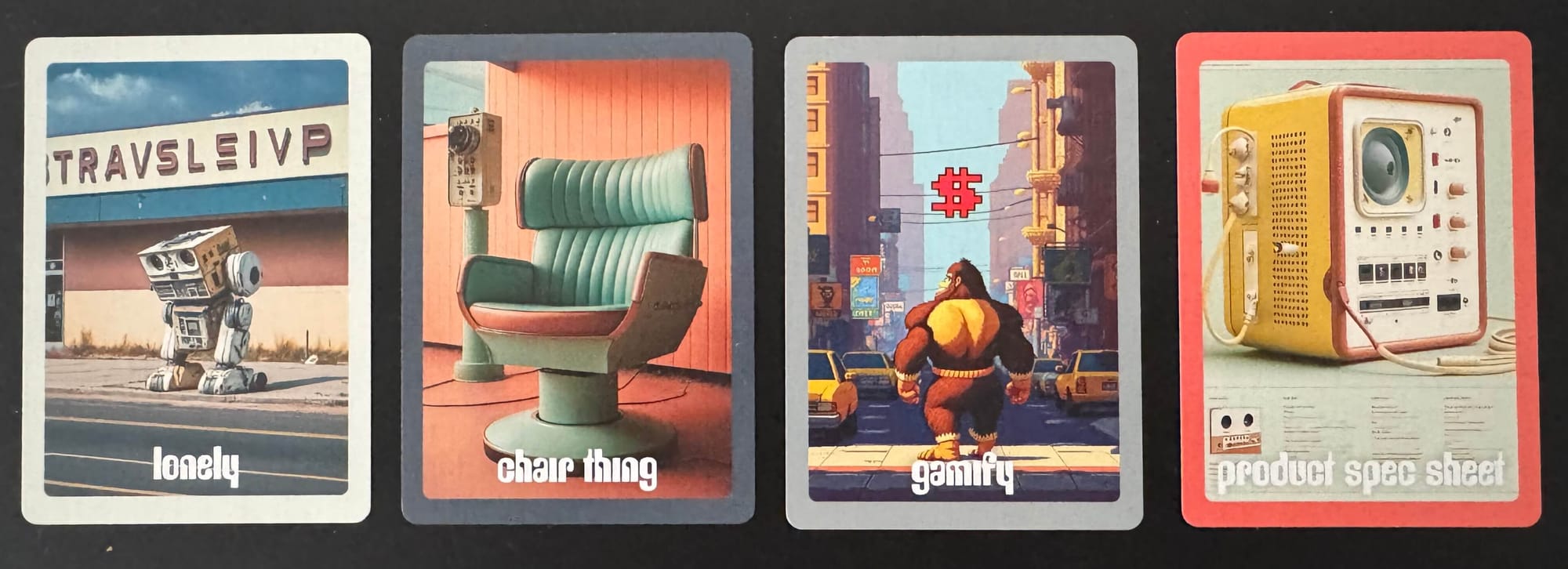
Our minds went to all sorts of scenarios and possibilities, stretching our imagination. In the end, we came up with an equally weird and fun artifact: 'The Starbase Chair'.
The Starbase Chair is an artifact from the future that enables users to train AI in exchange for language credits– including legacy code. Imagine having a temporal ability to use Chinese or Java, with knowledge downloaded directly into your mind. The chair features holographic displays, gamification and instant rewards.
Beyond its practical uses, the Starbase Chair offers an opportunity to overcome moments of isolation. By unlocking new languages, users can bridge cultural gaps and build new relationships across the globe.
A weak signal that inspired this concept came from filling out surveys on Midjourney to earn extra hours. Despite our general concerns about privacy and data protection, we often give it away without hesitation if there’s a benefit on the table.
Just for fun, we also did an exercise to think who could be the possible creator of a product like this? Duolingo seems a likely contender. Their owl's infamous personality makes it easy to imagine: "Complete your AI training– or else!". It's not far-fetched to imagine companies like Duolingo evolving their offering dramatically, much like Nintendo's shift from playing cards to video games, or Youtube's transformation from an online dating service to a video-sharing platform. History shows us that innovation often comes from unexpected pivots –and we expect this trend to continue.
While the final concept design and the product sheet of the chair are in the works for our second challenge of the game, here is an early iteration of it for illustrative purposes.
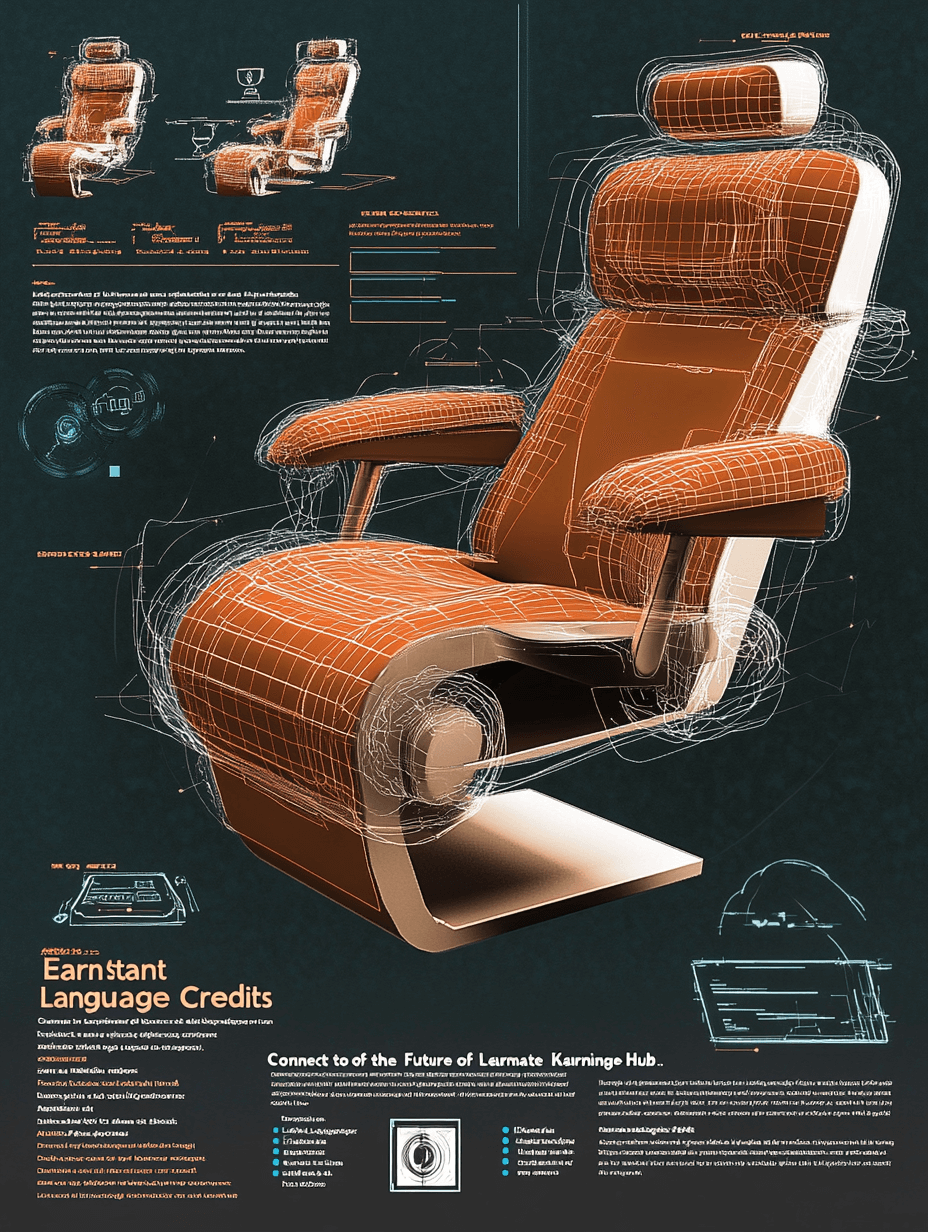
To this day, Design Fiction remains our most valued tool for shaping the story.
With immersive regards from my digital persona!

